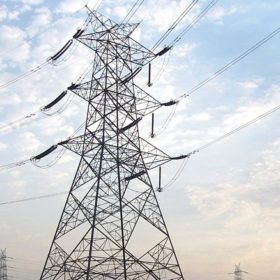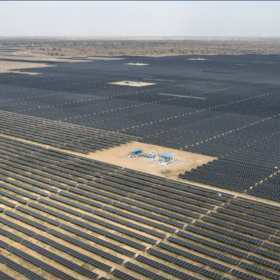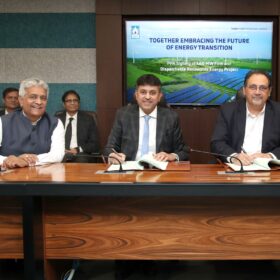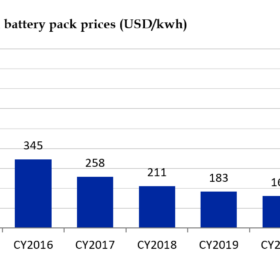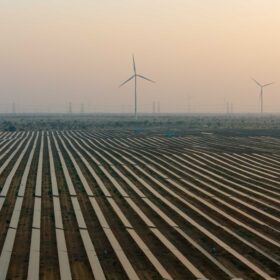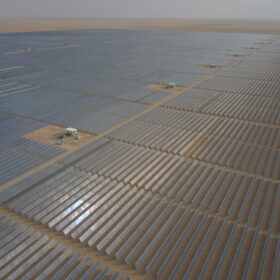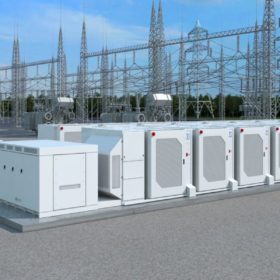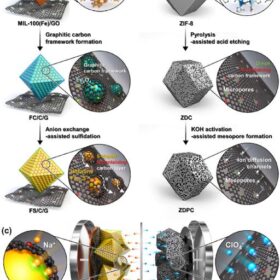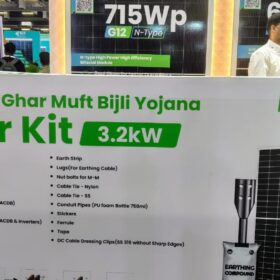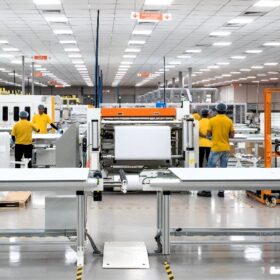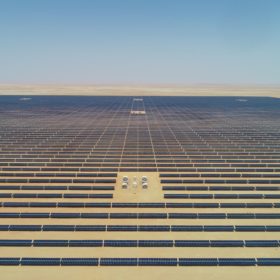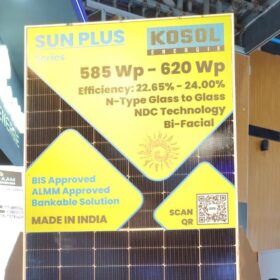Tata Power reports record profit of INR 4,280 crore for FY 2024
Tata Power has recorded INR 61,542 crore of revenue and INR 4,280 crore net profit for the fiscal year ended March 31, 2024.
India’s first utility-scale, standalone battery energy storage project receives regulatory approval
BSES Rajdhani Power Ltd’s 20 MW/ 40 MWh project is India’s first utility-scale standalone battery energy storage system to obtain regulatory approval under Section 63 of the Electricity Act, 2003. The project is supported by concessional loan from the Global Energy Alliance for People and Planet (GEAPP).
India tendered ‘record’ 70 GW of renewables in FY 2024
India invited bids to set up 69.8 GW of renewable energy capacity, far surpassing the annual bidding target of 50 GW. The bidding activity surged due to large-scale potential for market growth, central government support in terms of targets and regulatory frameworks, and higher operating margins.
Tata Power secures PPA with SJVN for 460 MW renewables-plus-storage project
Tata Power Renewable Energy Ltd will develop a hybrid plant comprising solar, wind, and battery storage components to meet the 460 MW firm and dispatchable renewable power requirement.
Adani Green Energy revenue up 33% YoY to INR 7,735 crore
Adani Green Energy Ltd (AGEL) also reported its operational capacity grew 35% YoY to 10,934 MW with greenfield addition of 2,418 MW solar and 430 MW wind projects. The company’s renewable energy capacity target is now revised upwards to 50 GW by 2030.
Declining battery costs to boost adoption of battery energy storage projects: ICRA
Battery prices reached an all-time low in 2023 led by the moderation in raw material prices amid the increase in production across the value chain
India installed 15 GW of solar capacity in FY 2024: CEEW-CEF
India added 18.5 GW of renewable energy generation capacity in FY 2024, comprising 81% (15 GW) from solar (grid-scale and rooftop).
Scientist hails commercial feasibility of Saudi Arabian hydrogen city plan
Alberto Boretti was a senior research professor at Prince Mohammad Bin Fahd University in 2021 when he first started discussing the idea of a hydrogen city in Al Khobar, Saudi Arabia. The New Zealand-based independent tells pv magazine that it is now commercially feasible, as the city’s 200 MW of energy demand would necessitate 1 GW to 1.3 GW of solar and wind capacity, 509 MW to 997 MW of electrolysis capacity, and 145,000 MWh of hydrogen storage capacity.
IEA calls for sixfold expansion of global energy storage capacity
The International Energy Agency (IEA) has issued its first report on the importance of battery energy storage technology in the energy transition. It has found that tripling renewable energy capacity by 2030 would require 1,500 GW of battery storage.
Sodium-ion battery could charge in several seconds
Researchers at the Korea Advanced Institute of Science and Technology (KAIST) have identified a high-energy, high-power hybrid sodium-ion battery capable of charging in just a few seconds. The system integrates anode materials typically used in batteries with cathodes suitable for supercapacitors.

